
Figure 1. WiMAX Network Architecture
In this paper, an attempt has been made to provide QoS in WiMAX IEEE 802.16 with fairness which is a challenging issue due to limited bandwidth and limited energy. To overcome these an attempt has been made in OPNET (Optimized Network Engineering Tool) which is a powerful network simulator. A appropriate classification approach in modern communication is on hand that is the usage of QoS managed via the community network operator. By developing a new System methodology to QoS with fairness by means of incorporating some principle concepts like UGS, ERTPS, RTPS, BE for VoIP, Video, HTTP to provide equal bandwidth allocation to all users in network. To get QoS along with fairness in WiMAX network, we need to overcome the issues like limited bandwidth and limited energy. This methodology proposes some other planning scheme mirroring the prerequisite of RTPS and the distinct NRTPS associations that accomplish the best ideal QoS requirement, excluding the immoderate aid consumption due to the fact that it maximizes delay for low-throughput applications as well as achieves low average, offers fairness regardless of version variation in server potential, and computationally efficient.
IEEE 802.16 ( Khalil & Ksentini, 2007) structure has one Base station (BS) and Multiple Subscriber Station (SS) Communication occuring in two bearings: from BS to SS is known as Downlink and from SS to BS is known as Uplink. During downlink, BS communicates data to all subscribers and subscribers chooses packets bounded for destination.
Four scheduling services were defined in IEEE 802.16: Unsolicited Grant Service (UGS); real-time Polling Service (rtPS); non-real-time Polling Service (nrtPS); and Best Effort (BE). The concept of the proportional fair scheduling is usually mentioned in planning. In this proposed work methodology we have proposed some other scheduling scheme established on relative proportional fairness. The scheduling boundaries have been chosen based on the quantity of connections in the network. Existing system does not provide QoS with fairness such as guaranteed QoS, Deterministic QoS. In wireless network due to the limited Bandwidth and limited energy, they were not able to provide QoS and fairness. In this case to provide fairness the concept of UGS, ertps, rtps, BE has been incorporated to provide fairness for VoIP, Video, HTTP respectively.
There has been a rapid growth in various wireless networks and along with that the demand for wireless data services and multimedia applications has grown. To supply higher carrier to meet the developing demand, there has been lots of research in the area of QoS. As the IEEE 802.16 standard is emerging and maturing, QoS troubles have been addressed with the aid of many of the papers.
Chen et al. (2005) describes an built-in QoS Control mechanism for WiMAX IEEE 802.16. A speedy signaling mechanism is designed to grant more layer built-in QoS for Point to Multi-Point (PMP) mode.
In another similar paper Alavi et al. (2005) proposed a specific architecture to support QoS mechanisms in WiMAX IEEE 802.16 standards.There is a difficulty in the WiMAX IEEE 802.16 standards that it defines different mechanisms to provide QoS requirements, and the hurdle lies in meeting those requirements and to design a efficient methodology to satisfy those requirements. This makes offering QoS, a difficult issue.
To overcome this issue, they recommend design method to put in force the proposed structure for all sorts of traffic classifications defined in the standard. QoS assist in IEEE 802.16 networks as explained in Cicconetti et al.(2006). They consider overall performance of the networks usage for IEEE 802.16 protocol. Guérin and Peris (1999) evaluated primary mechanisms for imparting QoS in packet networks. They discuss about control path schemes that are necessary to permit the customers and community to agree on provider definition and statistics direction mechanisms which allows the provision of differentiated service. These principles have been tailored into IEEE 802.16 in presenting the QoS support.
An evaluation and discussion of the 5 scheduling algorithms, specifically UGS, ertPS, rtPS, nrtPS and BE, is mentioned in Lee et al. (2006). Through the evaluation of useful resource utilization effectivity and VoIP capacity, they have recognized some of the bottlenecks in Unsolicited Grant Service (UGS) and real-time Polling Service (rtPS). The overall performance of UGS suffers due to waste of uplink resources. In rtPS there is an extra entry to delay and MAC overhead due to bandwidth system in rtPS algorithm for providing services to VoIP services.
Mai et al. (2007) put ahead a cross-layer QoS framework in the IEEE 802.16 network. They mentioned assist mechanisms and opportunistic scheduling designs tailor-made for WiMAX. Two novel mechanisms are proposed in the framework for overall performance improvement. A TCPMAC layer cross-layer layout has been proposed which maps into functionalities of network layer and data-link layers.
The first section in the proposed venture is the study of the WiMAX QoS equity scheduling and its structure and is familiar with the mechanism of QoS deployment in WiMAX which introduce the essential thought of traffic classifications. A simulation is carried out for its performance in OPNET simulator by using a WiMAX network model that performs some mechanism in which fairness scheduling is performed in between users and observer QoS.
The simulation considers an easy network topology with three traffic source and destination, and each of them uses distinct applications configuration in QoS by means of three different classes that are Gold, Silver, Bronze. The methods used are the HTTP, VoIP, and Video conference. And then the evaluation is performed via the end result with QoS.
WiMAX stands for Worldwide Interoperability for Microwave Access based totally on IEEE 802.16. Due to the growing needs of broadband services for wireless communication, WiMAX researches come to be one of the heating topics to researching subjects, i.e., throughput, transmission speed, load, delay, jitter, congestion control, area for coverage, hand off, cost and others. For that, the principal goal is to do trade-offs between the best of cost offerings ( Mahmood, 2018) as given in Figure 1.

Figure 1. WiMAX Network Architecture
Services in QOS:
The different situation deploys the QoS system by way of differentiating the software traffic by using precise classes, and three functions are used which are HTTP, VoIP, and Video conference. The fundamental simulation model used is shown in Figures 2, 3, 4 and 5. The simulation model and attributes of WiMaX network are shown in Figure 2 and 3. Figure 4 explains their application in OPNET and classes definition in Figure 5. We want some simulation parameters to supply the simulation model and configure the simulation model with QoS function.

Figure 2. Main Simulation Model

Figure 3. WiMAX Physical Layer Attributes

Figure 4. Application Configuration in OPNET

Figure 5. WiMAX QoS Classes Definitions
WiMAX has configured two parameters.
Now we have some class to define for QoS in WiMAX for fairness. In this first we will define WiMAX QoS class definition.
We need to set other configurations like the user mobile station, and similarly QoS configuration is obtained by means of defining the classifier attributes alongside with the uplink and downlink classes which corresponds every specific application in WiMAX for QoS fairness.
Figure 6 lets us set the classifier definition of the HTTP user by using the bronze class in the QoS deployment scenario in expansion to other Downlink and Uplink parameters.

Figure 6. HTTP used Classifier Definition
Figure 7 lets to set the classifier definition of the VoIP user by using the Silver class in the QoS deployment scenario in expansion to other Downlink and Uplink parameters.

Figure 7. VoIP user Classifier Definition
Figure 8 lets to set classifier definition of the Video user by using the Gold class in the QoS deployment scenario in expansion to other DL and UL parameters.

Figure 8. Voice user Classifier Definition
And finally all the classifiers definitions should be defined in all sectors of the serving base station node to complete the QoS classification procedure as shown in Figures 3 to 8.
In order to get the proposed approach to work, simulator OPNET, i.e., Optimized Network Engineering has been used.
The proposed network used consists of 4 WiMAX carrier classes: Ert-PS, Rt-PS, Nr-tPS, and BE. Each purpose adopted are VoIP, video conference, FTP, and HTTP. The traffic parameters for every carrier category are taken from and are given in Table 1.
The results observed in OPNET for network simulation in the Figure 9 show HTTP object and response time and Figure 10 shows the HTTP traffic sent and received. Figure 11 shows the VoIP for jitter and packet delay variation. Figure 12 shows the packet delay variation for video conference and Figure 13 shows the traffic sent and received in video conferencing.

Figure 9. HTTP Object and Response Time in QoS Scenario

Figure 10. HTTP Traffic Sent and Received

Figure 11. VoIP Jitter and Packet Delay Variation

Figure 12. Video Conference PDV

Figure 13. Video Conference Traffic Sent and Receive
Comparison of VoIP jitter, video conferencing and WiMAX throughput is shown in Figure 14, 15 and 16 respectively.

Figure 14. Comparison of VoIP Jitter
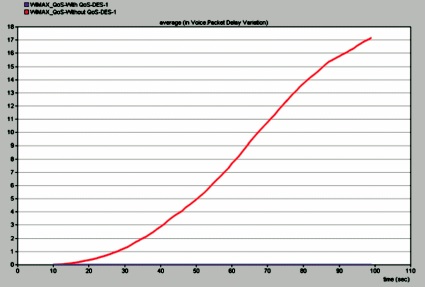
Figure 15. Video Conference PDV Comparison
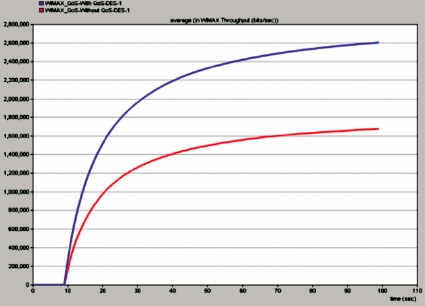
Figure 16. Comparison of WiMAX Throughput
From the graph shown in Figure 17 we get the HTTP browsing data with different time intervals. Figure 18 and 19 show the voice data and video conferencing data respectively with different time intervals. The WiMAX data for the same is shown in Figure 20.
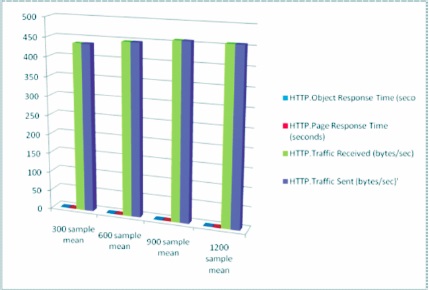
Figure 17. HTTP Browsing Data QoS Study with Different Time Intervals
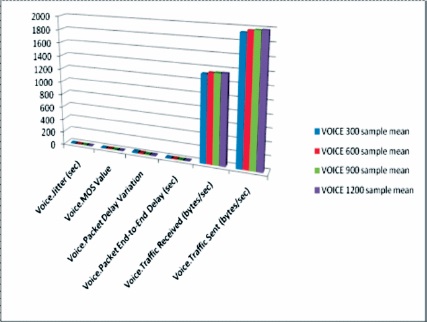
Figure 18. Voice Data QoS Study with Different Time Intervals
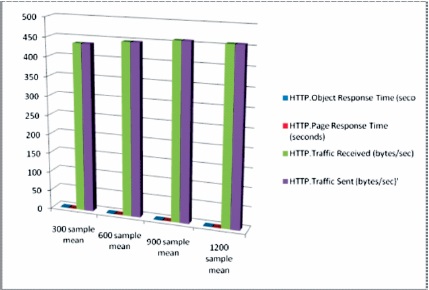
Figure 19. Video Conferencing Data QoS Study with Different Time Intervals
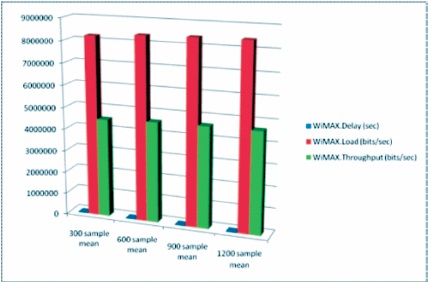
Figure 20. WiMAX Data QoS Study with Different Time Intervals
From the outcomes obtained from this methodology, we can come to a conclusion that, fairness is provided with standards like UGS, Ert-PS, Rt-PS, BE and are incorporated into VoIP, Video, HTTP. In VoIP, traffic can be exceptionally served with UGS carrier service flow. The UGS service flow is designed to provide regular constant bit rate and Periodic bandwidth is allotted via the BS to the MS. VoIP site visitors generated a precise constant sized packet at a constant regular interval. Thus the UGS service provider go with the flow in handling the visitors generated which is given via VoIP calls in the most finest way. The Rt-PS service carrier drift is designed for the applications such as streaming audio and streaming video. During the evaluation of the video traffic in WiMAX application, various nodes will increase in number, Rt-PS carrier comes out to be better and higher than Best Effort (BE) service provider for common jitter. UGS nevertheless has lower decrease packet loss. However, UGS provider service flow does no longer utilize the community network resources effectively in an efficient manner when the traffic is no longer steady having constant bit rate traffic in WiMAX application.
The bandwidth can be periodically requested in the rtPS service provider instead of constant bandwidth already being allocated, which can also get used in these applications where there is no bandwidth.
VoIP traffic, video streaming and HTTP are three applications purposes considered in the current analysis. Further evaluation can be carried out for different applications including, video VOIP voice over internet protocol which combines video traffic and VOIP traffic, File Transfer Protocol (FTP) traffic etc. The WiMAX module used in the evaluation did not support nrtPS and ertPS service flows that are with the aid of the IEEE 802.16 requirements. WiMA general and ertPS service carrier flow is designed for applications which generates a variable rate traffic which are delay dependent in nature.
An instance to such traffic in VOIP with silence suppression in will not require to send packets to destination during silent periods. This functional ability to stop and send packets throughout silent durations is recognized as VAD (Voice Activity Detection) or "Silence Suppression" and Variable rate and non-real time functional application such as FTP are supported by using the nrtPS service carrier flow in WiMAX application.